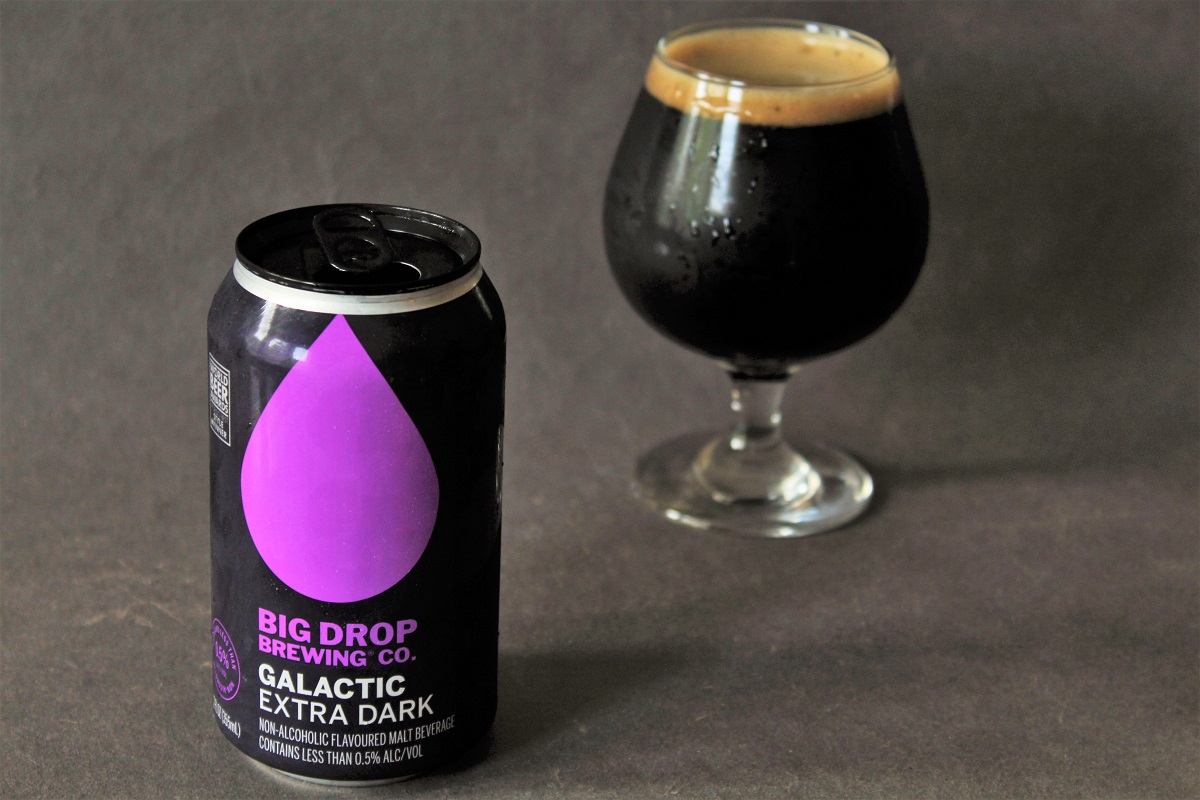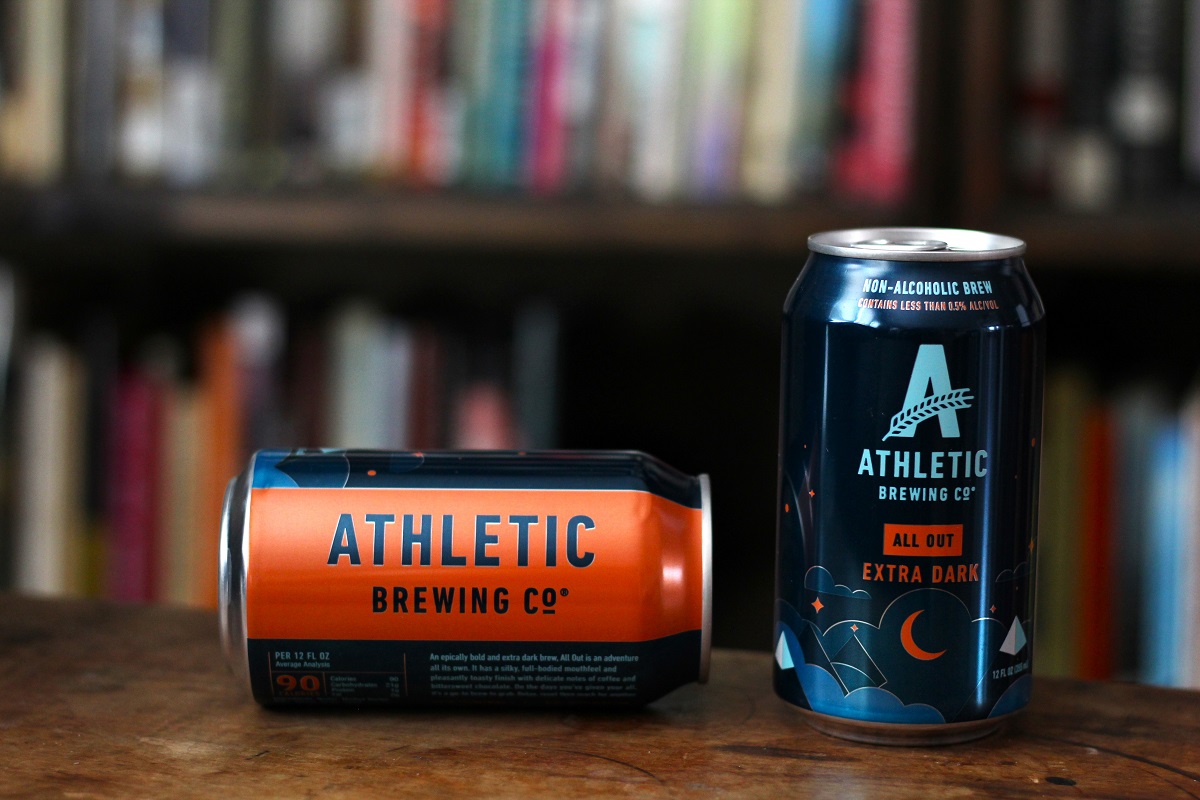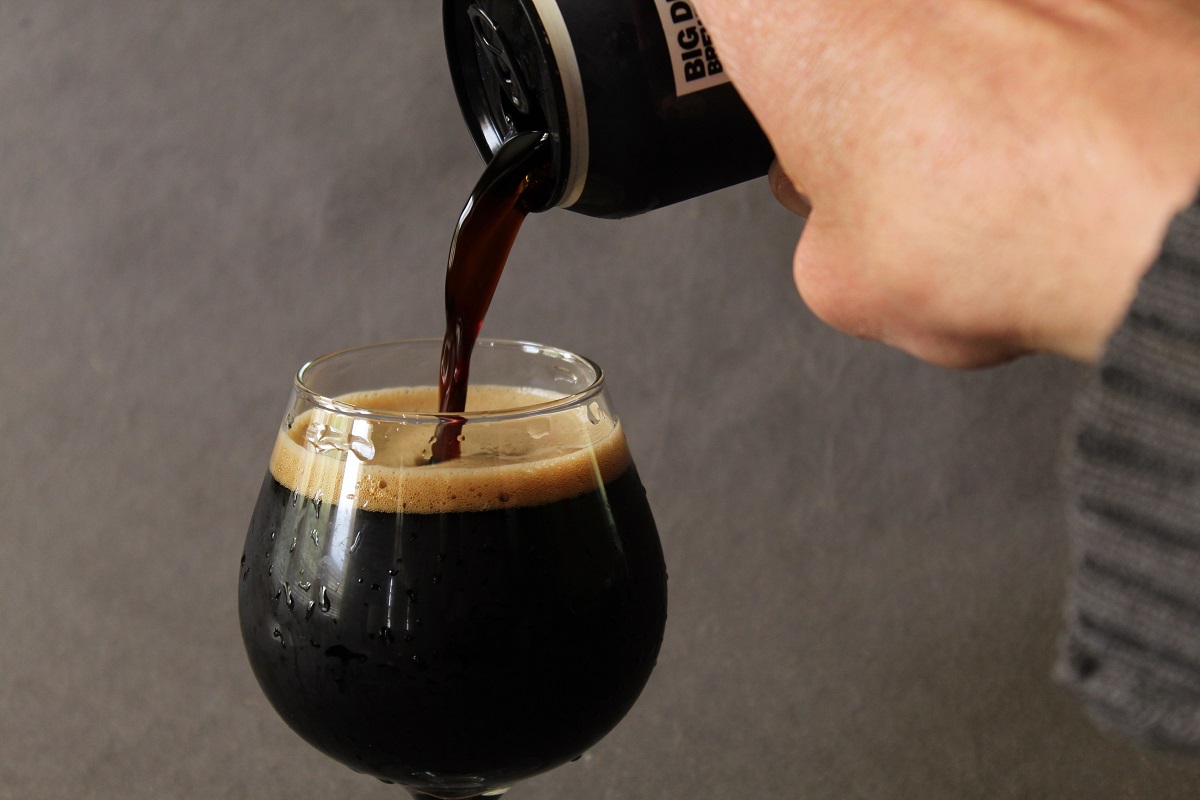Roasty & Alcohol-Free | Brewing Non-Alcoholic Stouts
While Stouts and other dark beer styles can be enjoyed any time of year, their comforting roast flavors of chocolate, coffee, toast, and burnt caramel provide a cozy accompaniment to the winter season. Many non-alcoholic (NA) producers are brewing NA Stouts both as seasonal releases and year-round core offerings. Brewing these styles without alcohol presents unique production challenges.
Calling a Stout a Stout
The first challenge of brewing NA Stouts falls on the packaging and marketing side of things: you aren’t legally allowed to call them what they are. Because “Stout” is recognized as a distinct beer style by the Alcohol and Tobacco Tax & Trade Bureau (TTB), non-alcoholic producers aren’t allowed to call NA versions by their style names. This makes it difficult for breweries to communicate to consumers what they’re buying, and is why it’s common to see descriptions like “dark brew” on cans of NA Stouts.
“We’re limited in how we’re able to talk about these beers,” says Chris Furnari, communications manager for Athletic Brewing, the largest dedicated non-alcoholic craft brewery in the country. For beers like All Out, Athletic’s year-round NA Stout, they’ve had to get creative.
“We don’t get to use language that is familiar to customers like ‘Porter’ or ‘Stout’,” he explains. “That’s why we use the phrase ‘Extra Dark.’ It makes it much more challenging to build awareness for these products. It’s a loss for the consumer.”
Big Drop Brewing, an NA producer founded in the U.K. who contract brews for the U.S. market at Great Central Brewing in Illinois, uses different terminology on U.S. cans of Galactic, a core-range Stout brewed with lactose and cacao nibs, and on cans for international markets. US cans are labeled with “Extra Dark,” while elsewhere the beer is more accurately labeled as Milk Stout.

For the sake of clarity, we’ll refer to these beers by their standard-strength style names in this article.
Recipe Development
Galactic was the first beer brewed at Big Drop, and Stouts have remained important for the brewery, which also produces a range of other typical styles like IPA and Pale Ale. Head of Production Johnny Clayton has overseen the creation of a Dry Irish Stout, a Coconut Stout, and numerous other iterations, but it all comes back to Galactic. The beer has won numerous international awards, including a few against standard-strength Stouts. Clayton says the key to dialing in his flagship NA Stout is malt selection.
Porter and Stout styles are defined by the roast character they get from dark malts and grains, but in a standard-strength version, these malts make up a relatively small ratio of the overall grain bill. Their potent flavors and colors provide the defining character, but efficient pale malts provide the main fermentable base and off-set the intensity of roasted malts. Non-alcoholic beers are brewed by either removing alcohol after fermentation, or not producing it in the first place, and both methods require changes to the ratios of the malts used in darker NA styles. This impacts both flavor and color. Often debittered dark malts will be used to avoid harshness from standard roasted malts in these new ratios.
“Extraction rates for debittered black malts don’t necessarily act the same way as they do in a full strength beer,” explains Clayton. “You need to use a lot more of them to achieve the color and flavor profile you’re looking for. There’s a significantly higher ratio of dark malts [in one of our Stouts] than what you would expect just to get the flavor in there.”
At Athletic Brewing, Director of Brewing Kevin Henschel echoes the need to be careful with dark malts in the context of NA brewing.
“When you think of a big Pastry Stout, you have that sweetness from the ethanol,” he says, “You’re missing that here, and without that you have to be mindful of that dark roasted malt mix, because it can taste like chewing on burnt coffee or burnt grain. You’ve got to get character without bitterness.”

He directly cites Briess Malt products like roasted barley, Blackprinz malt, and Midnight Wheat as grains he relies on. Both Henschel and Clayton mention using dark crystal malts for flavor and body as well.
Beyond ratios and volumes, variety is also important with malt selection. In a standard-strength beer, fermentation can contribute subtle flavors and alcohol itself has an impact. Big Drop tries to replicate this through a complex malt bill for its NA Stouts.
“When I first did the Milk Stout, there were in excess of 12 to 14 different types of highly kilned or roasted malts in there just to try to replicate all those wonderful nuances which come from fermentation and the subtleties that come out of that amazing reaction,” Clayton explains. “The original recipe hasn’t changed much, so I stand by that.”
While he’s understandably protective of the recipe for his award-winning Galactic, he does give the example of using melanoidin malt with its flavors of honey or cookie.
“It just comes back to that question of balance in the end,” he says. “You have to think of every ingredient as an individual aspect and how they react to the others. Imagine a mixing board in a music studio and someone pushing something up on one side and a level comes down on the other. It’s a constant balancing act.”
The Role of Adjuncts
Brewers have more than just malts in their toolboxes for adjusting the flavor and mouthfeel of NA Stouts, however. Because roasted malts have flavors of chocolate, coffee, dark caramel and others from the roasting process itself, it’s possible to substitute some of these very ingredients to supplement the grain bill.
At Untitled Art, Head Brewer Sam Green has overseen several dessert-inspired NA Stouts, including S’Mores and Chocolate Milk. Adjunct ingredients like lactose, vanilla, or cacao nibs play not only an obvious role in replicating those familiar flavor profiles, but also in subtly filling out the underlying malt flavors (the brewery is currently using TCHO cacao nibs). Athletic also brews a s’mores-inspired beer called Lodge Life using cacao, vanilla, and cinnamon.

Green also says alternative sugars are helpful for adding a touch of sweetness and body.
“A lot of Belgian candi syrup can be really nice,” he says. “Some dark sugars like brown sugar go quite aways sometimes too.”
At Big Drop, the Galactic flagship is built on two common adjuncts: cacao nibs and lactose. Big Drop also uses TCHO for cacao, one of the most common providers for craft brewers.
“That’s something I knew from early on would be a real boost to flavor,” Clayton says of TCHO’s Ghana nibs. “That cocoa flavor really comes out, as well as a slickness to the mouthfeel, which in a Milk Stout is nice.”
While lactose milk sugar is of course used in the Milk Stout, Big Drop has moved from using lactose to boost mouthfeel and subtle sweetness in all its Stouts to now using glycerin for mouthfeel in most.
Adjuncts also point a possible way forward for an NA frontier that hasn’t yet been meaningfully explored. For obvious reasons, current NA Stouts are intended to replicate lower and standard strength styles. Given the popularity of flavored and/or barrel-aged Imperial Stouts, is there any hope of replicating these bigger beers without alcohol? The NA brewers I spoke with are curious about the prospect, but show varying levels of optimism for success.
Clayton attempted an NA Imperial Stout as part of a collaboration a few years ago. He says there are plenty of things you can try in this realm, but thinks there’s a cap on the ABV you can replicate.
“You could add vanilla or you oak age,” he says in regards to recreating an NA barrel-aged Stout (vanilla is a common flavor to pull from oak). “I wouldn’t recommend sticking it in a barrel, but you could flavor it with oak. You can make it appear bigger, with more body and more flavor, but you run the risk of it being too sweet. I think in terms of replicating a beer, you’re looking at maybe 6% ABV tops for a reasonable approximation of a style.”

Henschel says he has also played with oak chips and vanilla to try to evoke wood flavors in an NA Stout, but says it’s hard to mimic a true Imperial Stout without making it seem artificial.
At Untitled Art, Green is intrigued by what some NA spirits producers are doing to imitate the high-proof versions of their styles.
“I had a non-alcoholic tequila, and they were using jalapeno for a burning sensation to try to mimic the alcohol,” he says. “That’s intriguing. You have to go really aggressive, you’ve got to exaggerate. That’s where some of that burnt flavor might play a nice role as long as you can harmonize it with the sweet.”
Non-alcoholic brewery Bravus Brewing medaled in the non-alcoholic category at the Great American Beer Festival in 2019 with an NA Stout aged in rum barrels that had previously been used for bourbon. The beer also used dark chocolate, coffee, and maple syrup. Atmos Brewing has also brewed an NA Milk Stout aged in bourbon barrels.
Color
Green says the biggest challenge with getting his NA Stouts dialed in was color. He explains the problem comes partially from a basic tenet of brewing any kind of NA beer: the overall grist bill is generally quite light.
“You don’t need alcohol, so you add a lot of water,” he explains. “What we’ve noticed is that in calculating out for a normal Stout to get to 40 SRM and then compensating for that on an NA version, it’s still not dark enough.”
He too mentions Midnight Wheat as a great tool, as it offers fairly potent dark color without adjusting flavor too much. He also says it’s possible to use coloring agents, or lean into dark adjuncts, though the latter will have an impact on flavor.
“I would argue it’s relatively easy to make a beer as black as possible, ” says Clayton at Big Drop. “Then it’s a case of, okay, we’ve made a black beer, but it’s very dry and a bit astringent. Then you look at what you’ve used and make adjustments. Have you used roasted barley? Then you might want to swap that out for something like Carafa III [debittered black malt from Weyermann].”
Conclusion
While brewing NA Stouts comes with all the challenges of replicating any beer style in non-alcoholic format, it also has advantages. Clayton points out that because Stouts already have some intense flavors from their roasted ingredients, that can help cover a bit of what’s missing. A bit of sensory trickery can have an impact as well—for better or worse, many drinkers still perceive darker beers as heavier than paler styles, even if the gravities are equal. This erroneous perception can help to “sell” the mouthfeel of an NA Stout that might otherwise come across as too light to replicate a standard-strength version.
Despite challenges, NA brewers are showing it’s possible to brew excellent non-alcoholic Stouts.
All photos by David Nilsen.









Submit a Comment